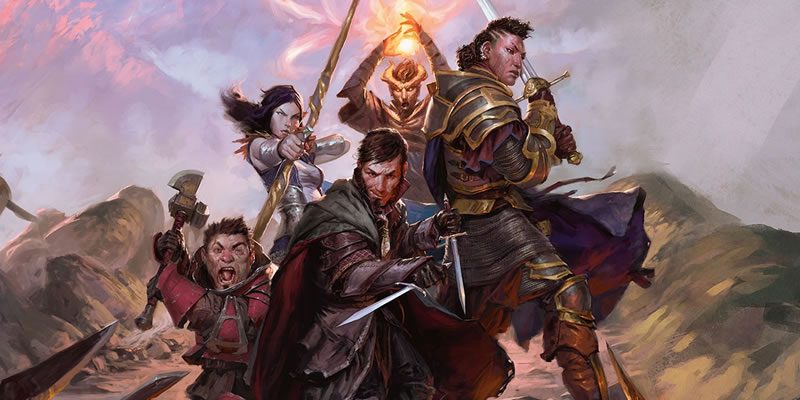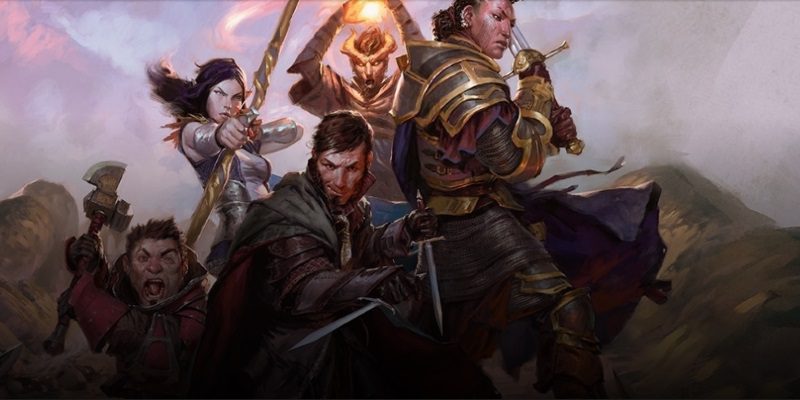UA: Three-Pillar Experience Breakdown

The August Unearthed Arcana article addresses an alternate approach to awarding experience. In particular, it promises to promote exploration and palaver as primary providers of XP, to keep up with combat. I would love to see polling on the XP systems that each table uses (not counting the Adventurer’s League), but that’s a matter for another day. It’s also a pretty simple approach, so let’s pull back the curtain and proceed.
This is probably not the first time you’re hearing of Exploration, Social Interaction, and Combat as the Three Pillars of D&D. It is one of the first subsystems to engage those ideas in a front-and-center way, I think? Anyway, this sort of expands on the definitions of the Exploration pillar to include the looting part of play.
The core of the idea is getting rid of escalating XP totals per level; you level every time you earn 100 XP. This is more about notational ease than anything else. Let’s be real, escalating numbers is always flim-flammery that feels like achievement.
So that you don’t just keep having the same low-level adventures with your high-level powers (a problem I hope no one would ever have, but… yeah), the subsystem cares about your character tier. It means things get complicated in a hurry if you have characters in the party on both sides of a tier threshold. Not unbearably so, but you’re looking at sacrificing the lovely simplicity of the system. On the other hand, since characters of lower level would earn more XP for the same encounter, they can actually catch up.
Okay, with all of that prelude:
There are four categories of XP. Combat XP is based on comparing the PCs’ level to the monsters’ CR, which is pretty sensible. It’s going to come along in drips and drabs, because the numbers are small unless you’re fighting above your weight class, in which case you get 15 XP rather than the base of 5. Well, okay, a 1st-level character getting in a fight with a CR 2 monster is pretty standard, which is nice because it means you’ll still burn through early levels with due haste. A team of 10th-level characters probably don’t fight a lot of monsters of CR 20, and there are no monsters to double your level at 16+. In a less direct way, this trend continues into the other categories.
Two of the XP categories fall under the Exploration pillar: Items and Locations. XP for Items comes from winning valuable treasures (not large sums of coin, just items of value) or magic items of increasing rarity. Notably, it doesn’t suggest that you get XP for loot paid as a reward by a patron – just things seized by force of arms, cunning, or exploration. I would hope that characters wouldn’t make decisions with any overt emphasis on that fact. It also treats artifacts as “just” top-tier magic items, which is grossly incorrect – they’re stories and threats in themselves more often than not. It’s also going to be very rare to find items above your tier at 11th level and above (how many artifacts can you really discover?), and there are no items above your tier after 17th level.
Location XP is the most straightforward interpretation of exploration, but also deeply reliant on the story to move to ever more exotic and important locales. If not, this whole category of XP falls over. Basically, this works for one particular type of campaign, but no others. If you run a Planescape campaign, sorry, friend. This whole category needs to be rebuilt, because you start in one of the most cosmically important locations in all of D&D canon… and almost every location you’re likely to discover and/or liberate bears nearly that same significance.
Finally, Social Interaction XP: much like location XP, this category relies on you to interact with and sway ever more important figures in the setting. This type, at least, still pays out some XP for victories one tier below your own. Which is good, because you can only have so many encounters where you sway a god before that starts to get samey.
Overall, I like what this alternate XP ruleset is trying to do, but I think it fits too narrow a variety of campaigns, and I think it largely ages out of usefulness before the highest tiers of play – if you’re not telling some very specific kinds of stories, combat becomes the sole XP pillar, and it gets pretty grindy at that. The document includes suggestions for campaigns that don’t strongly support some pillars of play, but I think you could get through a lot of high-tier adventuring and suddenly discover you hadn’t checked off anything that paid out XP. But then, 5e’s publication history three years in shows a real disinterest in top-tier play.
I think this could be massaged into suiting a wider variety of campaigns. What this doesn’t do is really show its superiority over the milestone approach. This is somewhat better than milestones for sandboxy campaigns at low to mid-levels, and sandbox play typically ends after mid-levels (or, rarely I guess, segues into storyline-driven play). This is a huge upgrade on a pure XP-for-monsters-killed model, because literally anything is a huge upgrade on that.


